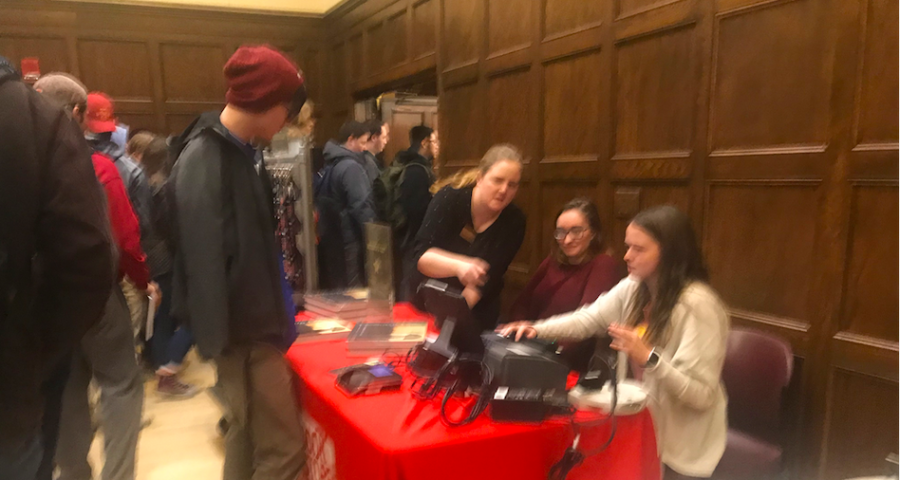Vietnam lecture shares the stories of those who have served
November 14, 2019
To recognize and share the stories of those who served the country in the Vietnam War, Steve Feimer, associate professor of justice studies at the University of South Dakota, spoke Thursday.
The lecture, “Vietnam Veterans: Still Coming Home,” took place at 7 p.m. in the Sun Room of the Memorial Union.
Feimer co-wrote the book also titled “Vietnam Veterans: Still Coming Home,” which promotes awareness of Vietnam War veterans and the physical and emotional issues they deal with.
To start off the event, Feimer gave a brief summary of his book. It is a compilation of various stories from Vietnam War veterans from all over the country and their experiences.
“A warrior dies twice; once on the battlefield and again when no one speaks their name,” Feimer said. “We really wanted to be able to capture these stories and to honor those people and to keep their name [alive].”
Many people attended the event, including many Iowa State students. Joshua Meador, sophomore in aerospace engineering, attended for one of his classes. He said he did not have much prior knowledge about the war.
“It seemed like the most interesting [lecture] for me to go to,” Meador said. “My grandpa served in World War II, but I don’t have any background in the Vietnam war other than the stuff we learned in high school.”
In the Vietnam War, American soldiers faced many challenges. One of these challenges was the fact it was hard to identify the enemy.
“You never quite know who the enemy is,” Feimer said. “In Vietnam, it could be the person doing your laundry during the day and you’re fighting them at night.”
Feimer addressed three different enemies American soldiers acknowledged: the Viet Cong, the North Vietnamese Army and child soldiers. The Viet Cong was made of both men and women who would regularly ambush. The North Vietnamese Army comprised of soldiers from the north. Child soldiers were Vietnamese children used to distract troops.
Another challenge American soldiers faced was Agent Orange, a mixture of different acids intended to benefit the United States during the war.
“The idea was to spray this stuff over the vegetation to kill off all the vegetation and kind of blow the cover for the Viet Cong,” Feimer said. “Still today there are parts of Vietnam that got sprayed where nothing will grow.”
Although Agent Orange was successful in killing the vegetation during the war, it has affected both Vietnamese and American people as a result. Many health issues have emerged to those exposed to it and even their families.
“It was interesting to see how many of the Vietnam [veterans] had suffered from weird kinds of illnesses and cancers,” Feimer said. “Also strange, but not surprising, is how many of their kids had come down with birth defects related to Agent Orange.”
Feimer’s book has a variety of profiles featuring Vietnam veterans of many different races. The diversity is something he said was intentional because while in the war, there was no discrimination among the men serving.
“We tried to write the book in which we included every branch of the service and every ethnic minority,” Feimer said.
Feimer said the American soldiers were not divided by the color of their skin. He said there were many people “caught in the middle,” of the war and were just fighting to end the conflict. This is something Meador said he found interesting.
“People that came from different backgrounds had to deal with different stuff.” Meador said. “When Feimer spoke about how the war was ‘color-blind,’ that was kind of the most interesting part to me.”
The last aspect of the Vietnam War Feimer talked about was when the American soldiers finally got to return home. He said for the ones who returned, it couldn’t have come fast enough. It is the 58,307 soldiers who did not return home were the ones Feimer wrote the book for.







